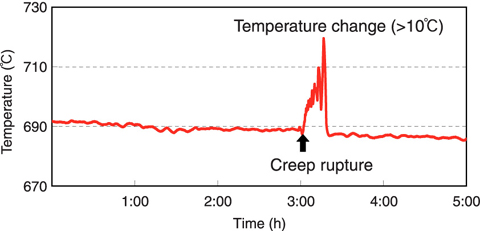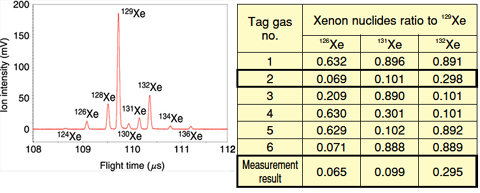
Fig.12-14 C reep rupture detection and Identification system

Fig.12-15 Creep rupture detection by temperature change

12-16 Tag gas isotopic ratio measured by RIMS
An on-line creep rupture experiment was conducted in the experimental fast reactor Joyo to evaluate the creep rupture strength of Oxide Dispersion Strengthened ferritic steel (ODS) under neutron irradiation. ODS has been developed as a candidate fuel cladding material for the next generation fast reactor because of its high temperature resistance and low swelling properties. Out-of-pile experiments in both argon and sodium environments have shown that ODS has higher creep rupture strength than the currently used austenitic stainless steel and the ferritic steel developed for the wrapper tube. The effect of neutron irradiation is the remaining item which needed to be confirmed in order to make mechanical designs with this material.
The Material Irradiation Rig with Temperature Control (MARICO) was developed to conduct this experiment in the Joyo reactor. ODS specimens (with no fuel) pressurized by helium gas up to 22 MPa were used to accelerate the creep rupture testing. The specimens were irradiated in the Joyo s core region, with the temperature maintained constant ±4 °C.
In order to determine when a specimen ruptured, two Chromium/Aluminum thermo couples were installed inside each capsule containing the ODS irradiation specimens. One was located at the center of the capsule for temperature control and the other was installed at the upper end of the capsule to measure the temperature increase due to the change of the thermal conductivity when the coolant space was filled with the released gas (Fig.12-14, Fig.12-15).
A few cm3 of a unique blend of stable xenon and krypton tag gas was contained in each specimen along with the helium fill gas. In the event of a specimen rupture, the gases were released into the coolant sodium and transferred into the argon cover gas region. The tag gas was measured by means of γ-ray spectrometry which monitors the activated tag gas nuclides produced by (n, γ) reactions (OLGM, Fig.12-14), and Resonance Ionization Mass Spectrometry. Both methods have high sensitivity to the xenon and krypton tag gases diluted in the cover gas to a level as low as a few ppb (Fig.12-14, Fig.12-16).
The experiment was carried out from April 2006 until May 2007. Fourteen ODS specimens out of 24 total were ruptured, and all were successfully identified by means of the temperature change and tag gas measurements. These results are expected to be useful for the design of future fast reactor fuel.